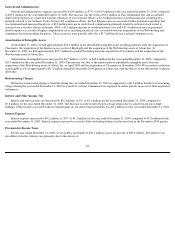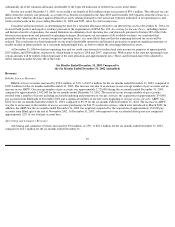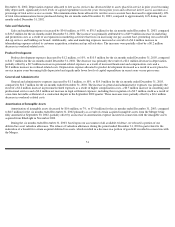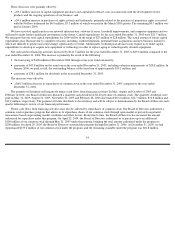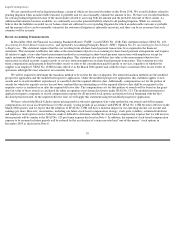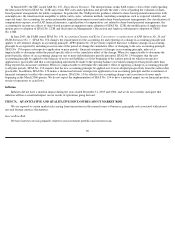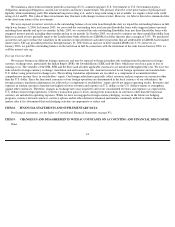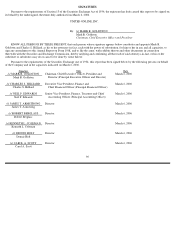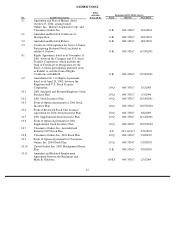Classmates.com 2005 Annual Report Download - page 58
Download and view the complete annual report
Please find page 58 of the 2005 Classmates.com annual report below. You can navigate through the pages in the report by either clicking on the pages listed below, or by using the keyword search tool below to find specific information within the annual report.
Our obligations typically include a minimum number of impressions or the satisfaction of other performance criteria. Revenue from
performance-based arrangements, including referral revenues, is recognized as the related performance criteria are met and when the fees
become fixed and determinable. In determining whether an arrangement exists, we ensure that a contract is in place, such as a standard insertion
order or a fully executed customer-specific agreement. We assess whether performance criteria have been met and whether the fees are fixed or
determinable based on a reconciliation of the performance criteria and the payment terms associated with the transaction. The reconciliation of
the performance criteria generally includes a comparison of internally tracked performance data to the contractual performance obligation and to
third-party or customer performance data in circumstances where that data is available. Probability of collection is assessed based on a number
of factors, including past transaction history with the customer and the creditworthiness of the customer. If it is determined that collection is not
reasonably assured, revenue is not recognized until collection becomes reasonably assured, which is generally upon receipt of cash.
Long
-lived Assets
We assess the impairment of long-
lived assets, which include property and equipment and identifiable intangible assets, whenever events or
changes in circumstances indicate that such assets might be impaired and the carrying value may not be recoverable in accordance with SFAS
No. 144,
Accounting for the Impairment or Disposal of Long-Lived Assets . Events and circumstances that may indicate that an asset is impaired
include significant decreases in the market value of an asset, significant underperformance relative to expected historical or projected future
results of operations, a change in the extent or manner in which an asset is used, significant declines in our stock price for a sustained period,
shifts in technology, loss of key management or personnel, changes in our operating model or strategy and competitive forces.
If events and circumstances indicate that the carrying amount of an asset may not be recoverable and the expected undiscounted future cash
flows attributable to the asset are less than the carrying amount of the asset, an impairment loss equal to the excess of the asset’s carrying value
over its fair value is recorded. Fair value is determined based on the present value of estimated expected future cash flows using a discount rate
commensurate with the risk involved, quoted market prices or appraised values, depending on the nature of the assets.
Goodwill
We adopted SFAS No. 142 on July 1, 2002. Under SFAS No. 142, goodwill is not amortized, but is tested for impairment at a reporting unit
level on an annual basis and between annual tests if an event occurs or circumstances change that would more likely than not reduce the fair
value of a reporting unit below its carrying value amount. Events or circumstances which could trigger an impairment review include a
significant adverse change in legal factors or in the business climate, an adverse action or assessment by a regulator, unanticipated competition, a
loss of key personnel, significant changes in the manner of our use of the acquired assets or the strategy for our overall business, significant
negative industry or economic trends, significant declines in our stock price for a sustained period or significant underperformance relative to
expected historical or projected future results of operations.
We determine reporting units by allocating assets, including goodwill, based on the related service offerings. In testing for a potential
impairment of goodwill, the estimated fair values of our reporting units are compared with their respective book values, including goodwill. If
the estimated fair value exceeds book value, goodwill is considered not to be impaired and no additional steps are necessary. If, however, the fair
value of the reporting unit is less than book value, then we are required to compare the carrying amount of the goodwill with its implied fair
value. The estimate of implied fair value of goodwill may require independent valuations of certain internally generated and unrecognized
intangible assets such as our pay account base, software and technology, and patents and trademarks. If the carrying amount of our
57



